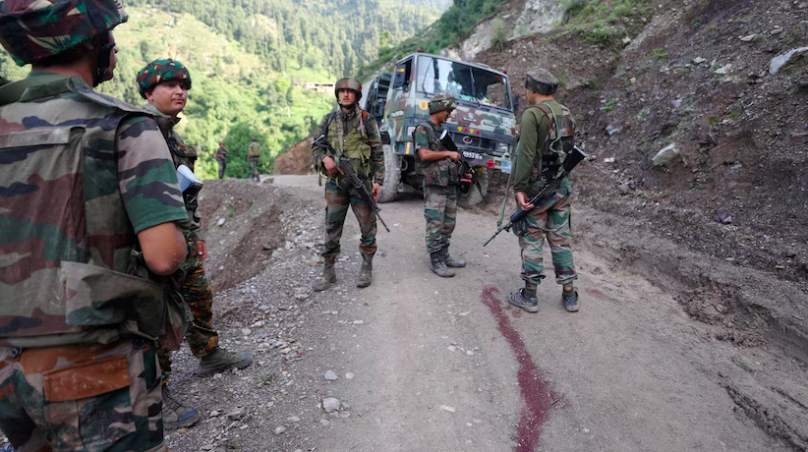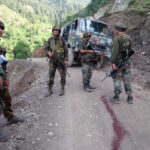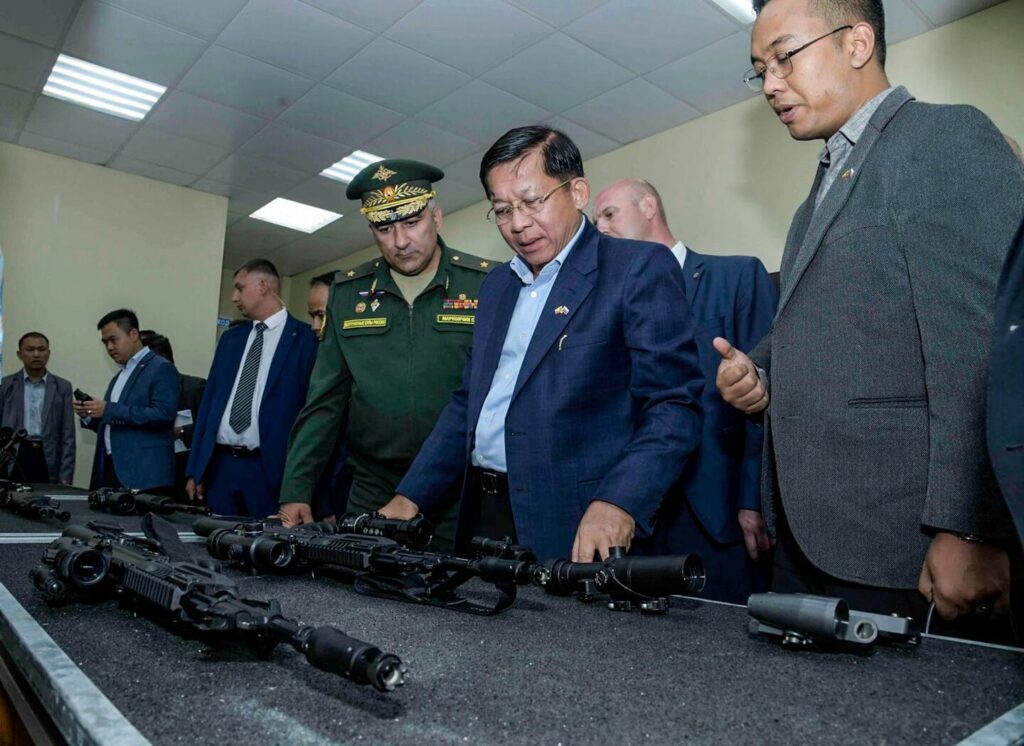MANTRAYA ANALYSIS# 80: 12 JULY 2024
BIBHU PRASAD ROUTRAY
Abstract
The Jammu region’s twin valleys– Chenab and Pir Panjal- have been witnessing increased militant activities in 2024. While militancy in the Kashmir region has decreased, militants have found ways to carry out regular violence in areas which have been peaceful for many years. Counter-terrorism operations without political initiatives could be self-limiting to counter the new trends in militant violence.

Ambush in Kathua
In the afternoon of 8 July 2024, five soldiers, all from the Indian Army’s Garhwal Rifles regiment, were killed in an ambush by suspected militants in the Kathua district of Jammu. According to initial reports, militants launched an attack in an area flanked by a hill on one side and a steep slope on the other. They descended from the hillside, targeting the army convoy comprising light and heavy vehicles on a routine patrol. One truck bore the brunt of the militants’ fire. Besides the dead, five soldiers were also injured in the attack. Kashmir Tigers, a shadow group of Jaish-e-Mohammad (JeM) claimed responsibility for the attack, which took place on the death anniversary of Hizbul Mujahideen ‘commander’ Burhan Wani, killed in an encounter on 8 July 2016 in south Kashmir.
The latest attack in Jammu marks a month of increasing violence in the region. The attack is also worrying as it coincided with the visit of Chief of Army Staff General Upendra Dwivedi just four days before. During the visit, General Dwivedi had been briefed by the IX “Rising Star” Corps, which is in charge of Kathua.
Spate of Attacks
Immediately after his departure, between 6 and 8 July, four militancy-related incidents took place. Two encounters took place on 6 and 7 July in which six militants and two soldiers were killed in south Kashmir. The Jammu & Kashmir (J&K) police chief interpreted the killing of six militants as a sign of the progress against terrorism, but such interpretation would not seem to reflect the situation on the ground. On 7 July early morning, one soldier was injured in a militant attack on a sentry post of the Territorial Army at village Galuthi in Rajouri. The militants escaped following a 30-minute exchange of fire with the security forces.
Since June, there have been seven attacks reported in the hitherto relatively peaceful Jammu region. On 9 June, nine people died and 33 were injured after suspected militants fired on a bus carrying Hindu pilgrims in the area. Two militants and a CRPF trooper were killed and six security personnel were injured in twin encounters on June 11 and 12. Three non-local militants were killed in Doda on 27 June.
Reactions from official circles to the increase in violence have been predictable. The tendency has been to focus on the latest incident and promise retribution without citing past incidents. Defence Minister Rajnath Singh tweeted, “The counter-terrorist operations are underway, and our soldiers are determined to usher in peace and order in the region.” The Defence-secretary also tweeted, “India will defeat the evil forces behind the attack.” Interestingly, the Indo-Russian joint statement issued during the Indian Prime Minister’s visit to Moscow also mentioned the attack. The intention would seem to direct focus on the Pakistani support terrorism receives in J&K, without acknowledging the fact the militants could also be receiving significant support internally.
Theory of the ‘Hiding Terrorists’
Two key elements are at the core of threat assessments as released by state authorities: (1) Recruitment of locals into militant groupings has decreased; hence, violence is primarily carried out by “foreign militants,” and (2) The “foreign militants” are exploiting the rugged terrain of the state. It appears, however, that the conflict is more complex than what is being presented.
A day before the attack on the Hindu pilgrims in June, the J&K police chief said the number of local militant recruits in the territory was dropping but that 70-80 foreign fighters remained active. Official data quoted by media claim that only 22 youths joined militancy in 2023, which is a huge drop from 130 recruited in 2022. At least 280 militants were killed in 2022 and 2023, most of them locals. This should have brought the local participation in militancy to negligible levels. That hasn’t happened. Recruitment of locals into militancy has continued. All six militants killed in two encounters on 7 July, for instance, were local youths—four from Kulgam and two from neighbouring Shopian district. Further, those not directly joining the militant groups as cadres could be acting as over-ground workers, informants, and facilitators. Investigations into the 8 July attack are reportedly looking into the possible role of a truck driven by a civilian driver which slowed down the movement of the army convoy near the attack site.
For the past several months, the J&K security establishment has pushed a theory advancing a group of foreign terrorists hiding in the inaccessible forests and carrying out surprise attacks on security personnel and civilians – thus to explain the low-scale yet sustained militant attacks in Chenab and Pir Panjal valleys. In early January 2024, to eliminate these elusive targets, the army unveiled its plan to launch Operation Sarvashakti (“Overwhelming Strength”), a large-scale initiative along the lines of Operation Sarpvinash in 2003, launched south of the Pir Panjal range. The new operation, the army claims, is to focus on pursuing militants suspected to be hiding in the dense jungles, mountains, and caves dotting the area. Attacks in recent months indicate, though, it has not yet achieved its objective. While the announcement of the launch of the operation received widespread media coverage, no follow-up reports have appeared. It is possible that the operation was swiftly called off after the army realised that the targets it was pursuing had relocated.
The Politics of Counter-Terrorism
Since the 2019 decision of the Central government to abrogate Article 370 of the Indian constitution, militancy has entered a complex phase. Facing sustained security force operations and what the government flaunts as a ‘360 degree CT approach’ targeting terrorism and all its facets, militants have shifted from their traditional operating areas to newer territories. The increase in militancy in Chenab Valley and the Pir Panjal Valley, which were peaceful for decades, demonstrates this. CT operations could also have been affected by the deployment of army personnel to the LAC, where a border standoff continues with China.
The critical question, of course, is whether the approach should be one of counterinsurgency, with counter-terrorism as a component, or of counter-terrorism, implying that there is no social base, however limited, serving to sustain the challenge. Regardless, lacking completely are political initiatives by New Delhi, which continues to treat militancy as a purely security issue existing only with Pakistani support. This, at best, is a political assessment curated for a particular constituency.
In a similar vein, the high 58.6 per cent of voters in J&K casting their ballot during the parliamentary elections is seen as a positive outcome of the abrogation of Article 370 by New Delhi.[1] This would seem an obvious “half a loaf.” Sustained overlooking ground realities could be limiting the effectiveness of operations, whatever their characterization, CT or COIN, which need to be backed up by political efforts. The fact that the Bharatiya Janata Party did not put up candidates from Kashmir in the recently concluded parliamentary elections is an indirect acknowledgement that its decision to end J&K’s special status does not find significant support among the target population, save perhaps a section within the Hindu community in Jammu. This silent but widely prevalent opposition to the government could still be helping the militants—both foreign and local—to stay afloat.
It is not known if the police and the army officials have an alternative opinion on the current steps to end militancy in J&K. Many of the uniformed men in charge have long CT experience in the region. It would be surprising if they did not advise the government of the need for political intervention to back their efforts. Till such opinions are expressed and factored into the official policies, the country’s efforts to end militancy will continue at a superficial level. This could lead to temporary, albeit at times spectacular results, but not the end of militancy and discontent.
END NOTE
[1] This was a 30-percentage-point jump from the last vote in 2019 and the highest in 35 years.
(Dr. Bibhu Prasad Routray is the Director of MISS. This analysis has been published as part of Mantraya’s ongoing “Fragility, Conflict, and Peace Building” and “Mapping Terror and Insurgent Networks” projects. All Mantraya publications are peer-reviewed.)




